Breast pumps are essential for nursing mothers who want to express milk for their babies. To ensure optimal performance, it’s important to replace breast pump parts regularly. However, many mothers are unsure about how often to replace these parts, which can lead to reduced milk supply, decreased suction, and even contamination.
Understanding Breast Pump Parts Breast pumps are composed of several parts, including flanges, valves, membranes, and tubing. These parts work together to create suction and extract milk from the breast. Over time, these parts can wear out, become damaged, or accumulate bacteria, which can affect the performance of the pump and even lead to infection.
When to Replace Breast Pump Parts The frequency of replacement depends on the type of part and how often the pump is used. For example, flanges and tubing should be replaced every three months, while valves and membranes should be replaced every one to three months. It’s also important to replace parts immediately if they become damaged or if the pump is not functioning properly.
Key Takeaways
- Regularly replacing breast pump parts is crucial for optimal performance and milk supply.
- Flanges and tubing should be replaced every three months, while valves and membranes should be replaced every one to three months.
- Damaged or malfunctioning parts should be replaced immediately to avoid contamination and reduced suction.
Understanding Breast Pump Parts
Breast pumps are an essential tool for lactating mothers who want to express milk for their babies. However, to keep the breast pump working efficiently, it is necessary to replace the parts regularly. Understanding the different parts and their functions can help mothers know when to replace them.

Flanges and Breast Shields
Flanges and breast shields are the parts of the breast pump that come in contact with the breast. They are responsible for creating suction and drawing milk from the breast. Flanges and breast shields come in different sizes, and it is essential to choose the right size for comfort and efficiency. It is recommended that mothers replace flanges and breast shields every six months to ensure they are in good condition.
Valves and Backflow Protectors
Valves and backflow protectors are essential parts of the breast pump. Valves regulate the suction and release of milk, while backflow protectors prevent milk from flowing back into the pump. It is recommended to replace valves and backflow protectors every three months or when they become discolored or torn.
Membranes and Diaphragms
Membranes and diaphragms are small parts that regulate the suction and release of milk. They are responsible for creating a seal and preventing air leaks. It is recommended to replace membranes and diaphragms every four to six weeks or when they become discolored or torn.
Tubing and Connectors
Tubing and connectors are the parts of the breast pump that connect the motor to the flanges and breast shields. They are responsible for the flow of milk from the breast to the collection container. It is recommended to replace tubing and connectors every three months or when they become discolored or cracked.
Duckbill Valves and Valve Membranes
Duckbill valves and valve membranes are parts of the breast pump that regulate the suction and release of milk. They are responsible for creating a seal and preventing air leaks. It is recommended to replace duckbill valves and valve membranes every four to six weeks or when they become discolored or torn.
Backflow Protector Diaphragm
The backflow protector diaphragm is a small part that prevents milk from flowing back into the pump. It is recommended to replace the backflow protector diaphragm every three months or when it becomes discolored or torn.
In conclusion, understanding breast pump parts and their functions can help mothers know when to replace them. Regular replacement of breast pump parts can ensure the pump is working efficiently and safely, providing the best possible milk expression experience for mothers.
When to Replace Breast Pump Parts
Breast pump parts are essential for milk expression. They are subject to wear and tear, which can affect their performance and the milk supply. It is essential to know when to replace breast pump parts to ensure that the pump works efficiently and effectively.
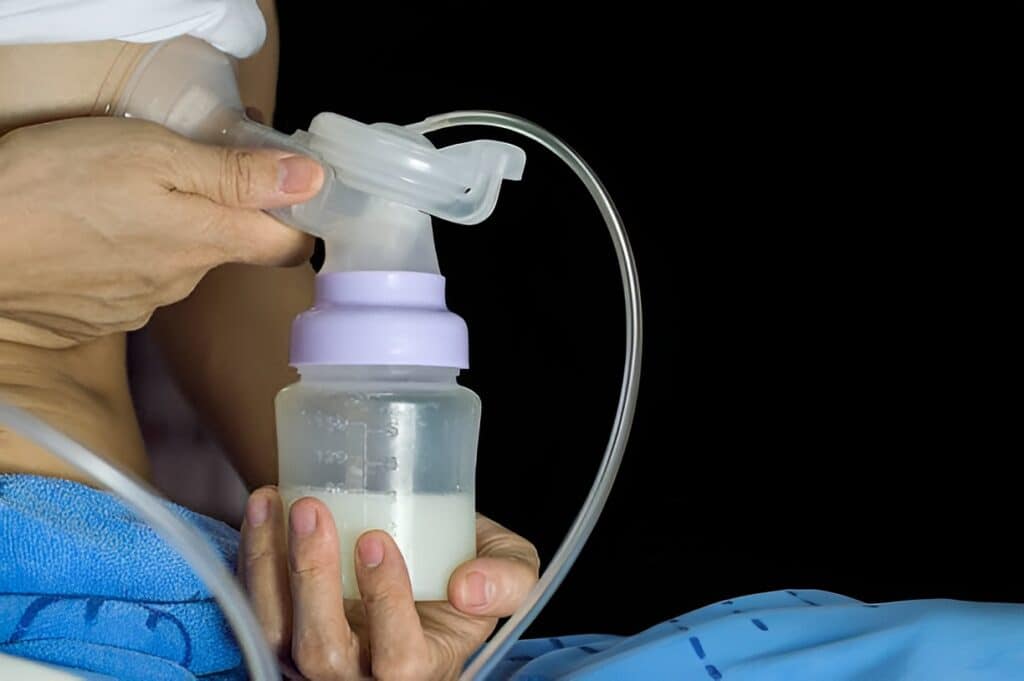
Signs of Wear and Tear
Breast pump parts are subject to wear and tear over time. The following are signs that indicate that it is time to replace breast pump parts:
- Cracks or tears in the tubing or membranes
- Loss of suction
- Residue or residue buildup
- Reduced milk supply
How Often to Replace Breast Pump Parts
The frequency of replacing breast pump parts depends on the intensity and frequency of usage. It is recommended to replace the following parts at the following intervals:
- Membranes: every 2-4 weeks
- Tubing: every 3 months
- Breast shields: every 6 months
- Valves: every 6 months
It is important to note that these are general guidelines, and the frequency of replacement may vary based on the intensity and frequency of usage.
Buildup of Residue
Residue buildup can affect the performance of breast pump parts. It is essential to clean the parts regularly to prevent residue buildup. It is recommended to clean the following parts after each use:
- Breast shields
- Membranes
- Valves
Tubing should be cleaned once a week.
In conclusion, it is essential to replace breast pump parts regularly to ensure their efficiency and effectiveness. Signs of wear and tear include cracks, loss of suction, and residue buildup. The frequency of replacement depends on the intensity and frequency of usage. Cleaning the parts regularly can prevent residue buildup and ensure optimal performance.
How to Clean and Maintain Breast Pump Parts
Proper cleaning and maintenance of breast pump parts are essential for ensuring the hygienic collection of breast milk and the longevity of the pump. Here are some tips on how to clean and maintain breast pump parts:
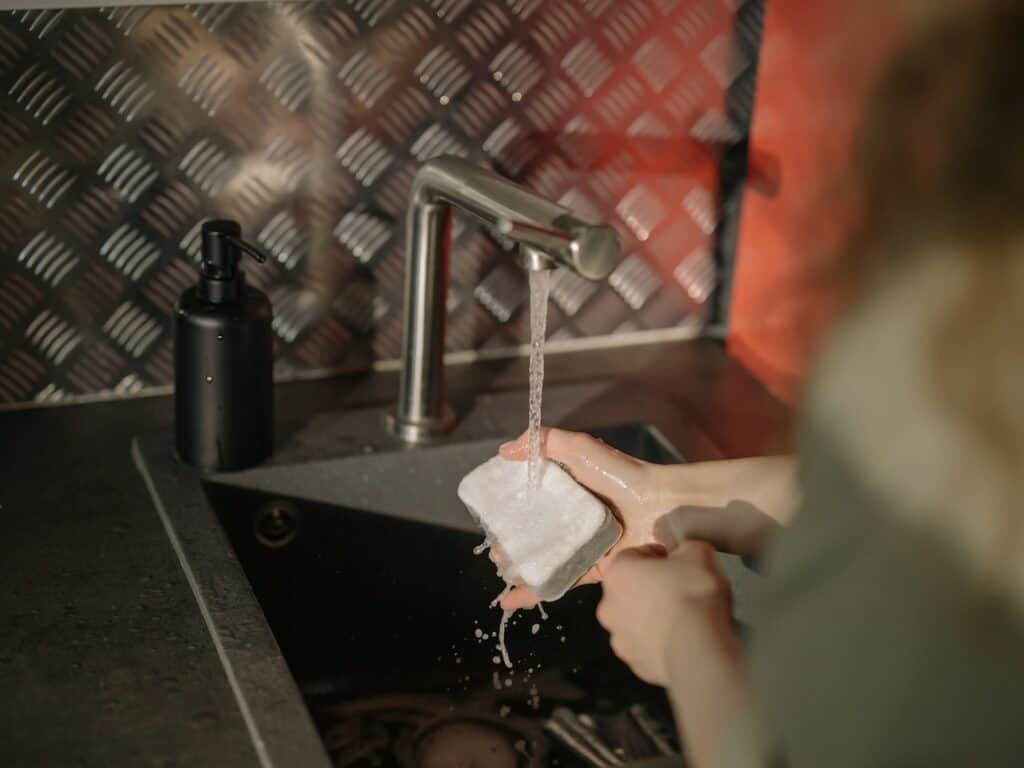
Cleaning
After each use, breast pump parts should be disassembled and washed thoroughly with warm, soapy water. All parts that come into contact with breast milk, including milk collection bottles, should be washed in this way. It is important to pay special attention to any crevices or hard-to-reach areas where milk may have accumulated.
Silicone and plastic parts can be washed in a dishwasher, but it is important to follow the manufacturer’s instructions for temperature and cycle settings. Alternatively, they can be sterilized in boiling water for 5-10 minutes.
Maintenance
Breast pump parts should be inspected regularly for wear and tear, and any damaged parts should be replaced immediately. Over time, silicone parts such as valves and membranes may lose their elasticity and become less effective at suctioning milk. Milk collection bottles and other plastic parts may also become cloudy or scratched, which can make them more difficult to clean and sanitize.
To maintain the performance of the breast pump, it is recommended to replace silicone parts every 3-6 months, depending on usage. Milk collection bottles and other plastic parts should be replaced if they become damaged or after approximately 6-12 months of use.
Sanitizing
In addition to regular cleaning, breast pump parts should be sanitized periodically to reduce the risk of bacterial contamination. This can be done by boiling the parts in water for 5-10 minutes or by using a steam sterilizer. Some manufacturers also offer sanitizing bags that can be used in the microwave.
It is important to note that sanitizing does not replace regular cleaning and that breast pump parts should always be washed thoroughly before sanitizing.
In conclusion, proper cleaning and maintenance of breast pump parts are essential for ensuring the hygienic collection of breast milk and the longevity of the pump. By following these tips, breast pump users can ensure that their pump remains in good working condition and that their breast milk remains safe for their baby to consume.
The Importance of Replacing Pump Parts
Breastfeeding is an essential part of a baby’s growth and development, and a breast pump can be an invaluable tool for mothers who need to express milk regularly. However, it is crucial to remember that breast pump parts need to be replaced regularly to ensure the safety and health of both the mother and the baby.
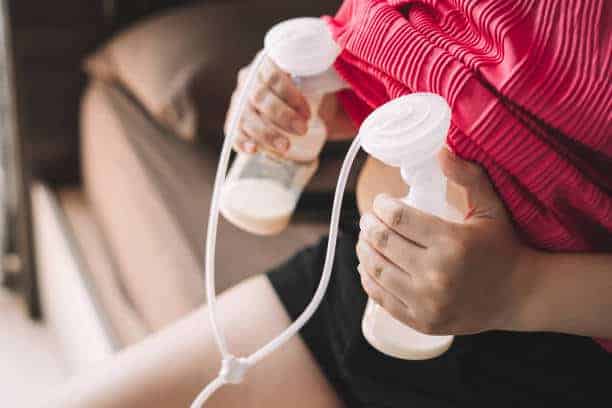
When breast pump parts are not replaced frequently enough, they can become contaminated with bacteria, mold, and other contaminants that can be harmful to the baby. These contaminants can cause infections and other health problems that can be challenging to treat.
Replacing breast pump parts regularly can help prevent these issues and give mothers peace of mind knowing that their breast milk is safe for their baby. It is recommended that mothers replace the following breast pump parts regularly:
- Breast shields
- Valves
- Membranes
- Tubing
The frequency of replacement will vary depending on the type of breast pump and how often it is used. It is important to check the manufacturer’s recommendations for replacement intervals and follow them closely.
In addition to following the manufacturer’s recommendations, mothers should also inspect their breast pump parts regularly for signs of wear and tear, damage, or contamination. If any of these issues are present, the part should be replaced immediately.
In conclusion, replacing breast pump parts regularly is essential for the safety and health of both the mother and the baby. By following the manufacturer’s recommendations and inspecting the parts regularly, mothers can ensure that their breast milk is safe and free from contaminants.
Types of Breast Pump Parts to Replace
Breast pumps are essential tools for nursing mothers, but they require regular maintenance to function efficiently. One crucial aspect of maintenance is replacing worn-out or damaged parts. While some parts may last for several months, others may need to be replaced more frequently. Here are some of the breast pump parts that nursing mothers should consider replacing:
Breastshields
Breastshields are the parts of the breast pump that come into contact with the mother’s breasts during pumping. They are available in different sizes to fit different breast sizes. It is recommended that nursing mothers replace their breastshields every six months or whenever they notice signs of wear and tear.
Valves and Membranes
Valves and membranes are essential parts of the breast pump that regulate suction and vacuum pressure. They need to be replaced regularly to ensure that the pump operates efficiently. Nursing mothers should replace their valves and membranes every three months or whenever they notice a decrease in suction power.
Milk Collection Kit
The milk collection kit includes bottles, caps, and lids that collect and store breast milk during pumping. These parts need to be replaced regularly to ensure that the milk is stored safely. Nursing mothers should replace their milk collection kit every six months or whenever they notice signs of wear and tear.
Tubing
The tubing connects the breastshields to the motor of the breast pump. It is essential to replace the tubing regularly to prevent mold growth and ensure that the pump works efficiently. Nursing mothers should replace their tubing every three months or whenever they notice signs of wear and tear.
Accessories
Breast pumps come with various accessories, such as carrying bags, power cords, and rechargeable batteries. These accessories need to be replaced if they become damaged or stop working efficiently. Nursing mothers should replace their breast pump accessories as needed.
In conclusion, regular maintenance and replacement of breast pump parts are essential to ensure that the pump works efficiently and safely. Nursing mothers should follow the manufacturer’s recommendations for replacing breast pump parts and accessories.
Specific Brands and Replacing Parts
Different breast pump brands have different recommendations for replacing parts. Here are some guidelines for specific brands:
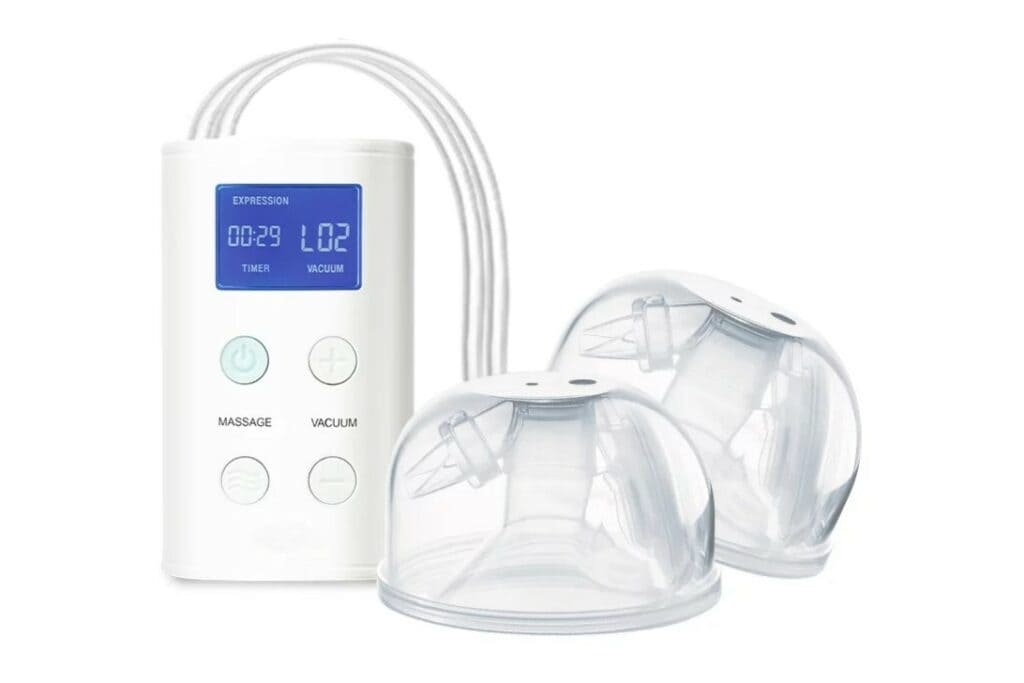
Medela
Medela recommends replacing breast pump parts every three months or sooner if they show signs of wear and tear. This includes valves, membranes, tubing, and breast shields. They also recommend replacing the motor after 2,000 hours of use or every year, whichever comes first.
Spectra
Spectra recommends replacing breast pump parts every three months or sooner if they show signs of wear and tear. This includes backflow protectors, valves, tubing, and breast shields. They also recommend replacing the motor after 1,500 hours of use or every year, whichever comes first.
Motif
Motif recommends replacing breast pump parts every three months or sooner if they show signs of wear and tear. This includes valves, membranes, tubing, and breast shields. They also recommend replacing the motor after 1,000 hours of use or every year, whichever comes first.
Elvie
Elvie recommends replacing breast pump parts every six months or sooner if they show signs of wear and tear. This includes valves, membranes, and breast shields. They also recommend replacing the motor after 500 hours of use or every year, whichever comes first.
Hospital Grade
For hospital-grade breast pumps, it is recommended to replace parts after each use or at least every 24 hours. This includes tubing, breast shields, valves, and membranes.
It is important to follow the manufacturer’s recommendations for replacing breast pump parts to ensure the pump is working properly and to prevent contamination.
Insurance and Warranty for Breast Pump Parts
Breast pump parts can be expensive, but there are options available to help offset the cost. Insurance and warranties are two options that can be used to help pay for breast pump parts.
Insurance
Many health insurance plans will cover the cost of a breast pump and related parts. However, coverage varies by plan, so it is important to check with your insurance provider to see what is covered. Some plans may require a prescription from a doctor, while others may only cover certain brands or types of breast pumps.
Warranty
Most breast pump manufacturers offer warranties on their products, which can help cover the cost of replacement parts. Warranties typically cover defects in materials or workmanship, but may not cover normal wear and tear or damage caused by misuse. It is important to read the warranty carefully to understand what is covered and for how long.
Discounts
Breast pump manufacturers and retailers may offer discounts on replacement parts to customers who have purchased a breast pump from them. Some manufacturers may also offer discounts to customers who have purchased a breast pump through their insurance plan. It is important to check with the manufacturer or retailer to see what discounts are available.
Overall, insurance and warranties can be helpful options for offsetting the cost of breast pump parts. It is important to check with your insurance provider and read the warranty carefully to understand what is covered. Additionally, checking for discounts from manufacturers and retailers can help save money on replacement parts.
Recycling and Disposing Old Breast Pump Parts
Breast pump parts can wear out over time, or you may simply no longer need them. It’s important to dispose of them properly to ensure they don’t end up in a landfill where they can harm the environment. Here are a few options for recycling and disposing of old breast pump parts:
Recycling
Some breast pump parts are made of recyclable materials, such as plastic. Check with your local recycling center to see if they accept these types of materials. If they do, make sure to clean the parts thoroughly before recycling them.
Donating
If your breast pump parts are still in good condition, consider donating them to a local women’s shelter or breastfeeding support group. These organizations may be able to use the parts for mothers in need.
Disposing
If your breast pump parts are no longer usable or recyclable, they should be disposed of properly. Check with your local waste management facility to see if they offer special disposal services for medical equipment. Alternatively, you can wrap the parts in a plastic bag and dispose of them in your regular household trash.
It’s important to note that some breast pump parts, such as breast shields and tubing, are considered single-use and should not be reused or donated. Always check with the manufacturer’s instructions to ensure proper use and disposal of your breast pump parts.
By properly recycling or disposing of your old breast pump parts, you can help protect the environment and ensure that other mothers in need have access to safe and reliable equipment.
The Role of Breast Pump Parts in Milk Production
Breast pump parts play a crucial role in milk production for mothers who pump, especially for those who exclusively pump. The quality and condition of the breast pump parts can impact milk flow, suction power, and overall milk production.
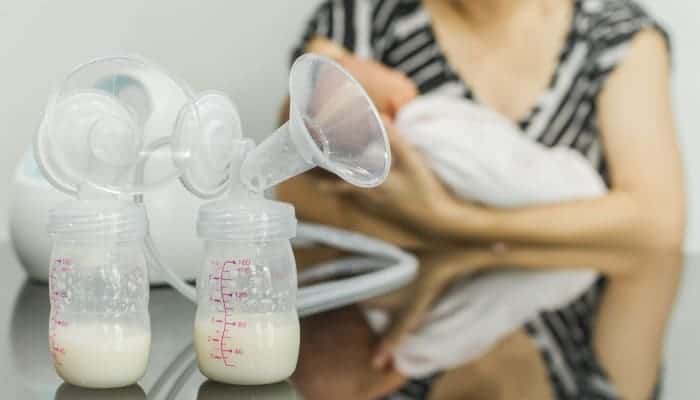
When a mother pumps, the suction created by the breast pump mimics the baby’s natural suckling motion, which stimulates milk production. As a result, the suction power of the breast pump is critical in ensuring adequate milk production. The breast pump parts, including the flanges, valves, and membranes, work together to create and maintain suction.
A closed system pump is recommended for mothers who pump to prevent contamination and ensure optimal suction power. Closed system pumps have a barrier that prevents milk from entering the tubing and motor, reducing the risk of mold and bacteria growth and prolonging the life of the pump.
It is essential to replace breast pump parts regularly to maintain suction power and milk production. Flanges should be replaced every few months or if there is any visible wear and tear. Valves and membranes should be replaced every few weeks or if there is any loss of suction or milk flow.
In conclusion, breast pump parts play a vital role in milk production for mothers who pump. Maintaining and replacing the parts regularly is essential to ensure optimal suction power and overall milk production.
Breastfeeding and the Use of Breast Pump
Breastfeeding is a natural and healthy way to provide nutrition to a baby. However, there may be times when a mother is unable to breastfeed directly, such as when she needs to return to work or when the baby is unable to latch properly. In such cases, a breast pump can be a useful tool to help maintain milk supply and provide milk to the baby.
Breast pumps come in various types, including manual, electric, and battery-operated. Regardless of the type, all breast pumps have parts that need to be replaced periodically to ensure optimal performance and hygiene.
The frequency of part replacement can vary depending on the type of breast pump and how often it is used. The following table provides a general guideline for when to replace breast pump parts:
| Part | Frequency of Replacement |
|---|---|
| Breast shields/flanges | Every 6-12 months |
| Valves and membranes | Every 1-3 months |
| Tubing | Every 3-6 months |
| Connectors | Every 3-6 months |
| Diaphragms | Every 1-3 months |
It is important to note that these are general guidelines and that the manufacturer’s recommendations should always be followed. Additionally, if any parts become damaged or show signs of wear and tear, they should be replaced immediately.
Proper care and maintenance of breast pump parts can also help prolong their lifespan. This includes washing them thoroughly after each use and storing them in a clean, dry place.
Overall, using a breast pump can be a helpful tool for breastfeeding mothers. By following proper maintenance and replacement guidelines, mothers can ensure that their breast pump is working effectively and safely.
Related Posts:
Frequently Asked Questions
How often should breast pump parts be replaced?
Breast pump parts should be replaced regularly to ensure optimal performance and hygiene. The frequency of replacement depends on the specific parts and how often they are used. Generally, it is recommended to replace breast pump parts every 3-6 months.
How do I know when to replace my breast pump parts?
It is important to inspect your breast pump parts regularly for signs of wear and tear. If you notice any cracks, tears, or discoloration, it may be time to replace the part. Additionally, if you notice a decrease in suction or milk output, it may be a sign that your breast pump parts need replacing.
What are the signs that my breast pump parts need replacing?
Some signs that your breast pump parts may need replacing include decreased suction or milk output, discoloration, cracks, tears, or stiffness. If you notice any of these signs, it is recommended to replace the affected part as soon as possible.
How often do I need to change the tubing on my breast pump?
Tubing should be replaced every 3-6 months, or sooner if there are any signs of wear and tear. It is important to inspect the tubing regularly for cracks, tears, or discoloration, as these can affect suction and hygiene.
What is the lifespan of breast pump membranes?
Breast pump membranes typically last 1-3 months, depending on usage and care. It is important to inspect the membranes regularly for tears or holes, as these can affect suction and hygiene.
What are the recommended replacement intervals for breast pump flange inserts?
Flange inserts should be replaced every 3-6 months, or sooner if there are any signs of wear and tear. It is important to inspect the inserts regularly for cracks, tears, or discoloration, as these can affect suction and hygiene.
Related Post: Can You Take Emergen C While Breastfeeding?

Iesha is a loving mother of 2 beautiful children. She’s an active parent who enjoys indoor and outdoor adventures with her family. Her mission is to share practical and realistic parenting advice to help the parenting community becoming stronger.
